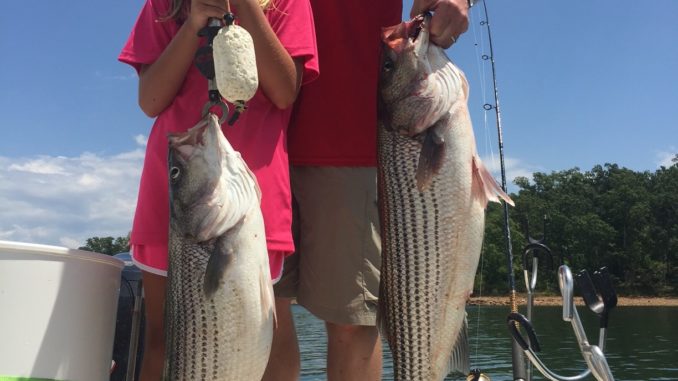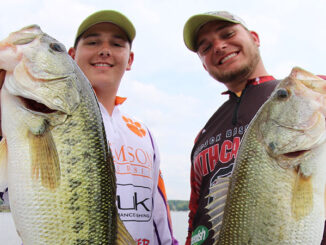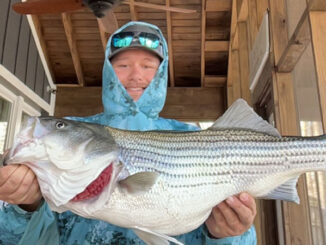
Summer lingers into September, but the expectation of fall starts to creep into the air, spurred by the excitement of striper fishing success on South Carolina’s Lake Hartwell.
“With the weather we’ve had the past several years, the water stays warm for most all of September,” said guide Seth Owens of Lines Out Charters in Anderson, S.C.
Fish don’t get into a real fall pattern until the cooler days and nights more common in October. But despite the heat, striper fishing can be very good this month. In fact, Owens said it can be exciting at times, because the fish will come up schooling at various times of day.
Stripers will still be mostly congregated on the lower end of the lake in the deeper water, he said, noting that as the water starts to cool when fall arrives, fish will begin to migrate back towards mid-lake near the river forks. While the fish are in the deeper, lower-lake area they can be caught a couple of different ways.
“When the fish come up schooling, we throw a white fly made by Betts called a Thing Popper, with a weighted cork to help cast it. Sebile also makes a good topwater bait,” he said. “But you will have to fish down rods deep for the quality fish. Don’t be afraid to fish 100 feet or even deeper, depending on the weather. Sometimes, we actually fish 110 feet deep on the bottom, and sometimes, the fish will suspend 60 to 80 feet deep.”
While live herring will draw strikes in the deepest water, Owens (864-909-7388) noted that if the water quality declines from lack of oxygen and becomes too hot for herring to survive, artificial lures will work just fine.
“The fish may get a little stressed if the water quality gets too bad, and the reaction strike is sometimes the only way to get them to hit,” said Owens, whose favorite tactic for deep fish is to power-reel 8-inch spoons and 2-ounce bucktails.
“When we power reel, I use a line-counter reel to stay out of the trees and let it down below the fish, then burn it up through them, pausing very briefly a few times while coming through the schools,” Owens said.
While fishing schools busting the surface might produce more fish, they are usually in the 1- to 5-pound range. The bigger fish, caught deeper, may run from 4 to 20 pounds.
Kinsley O’Dell and her father, Matt, from Rock Hill, S.C., experienced first-hand the kind of fish that power-reeling can produce on a trip with Owens last year, landing stripers up to 15 pounds.
“This young lady had a 5-pound hybrid up next to the boat. As I went to net the fish, a striper around 30 pounds came up following the hybrid,” Owens said. “She saw that big fish and spent the rest of the day trying to catch the big one.”



